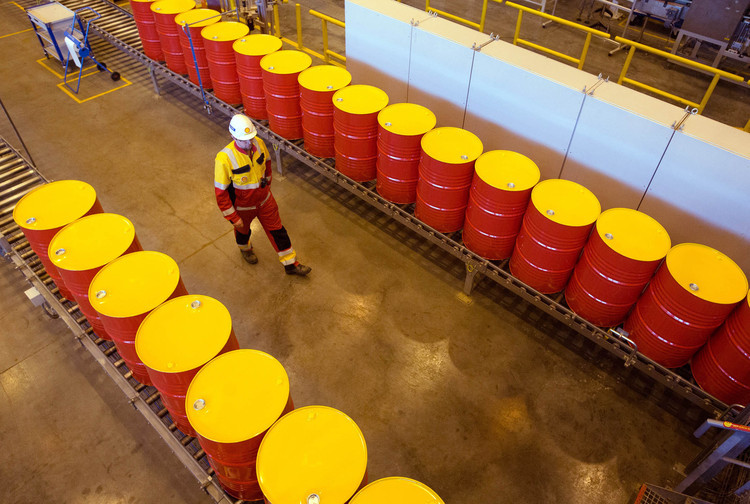
The World Energy Council (WEC) today outlined a ‘grand transition’ in future energy demands, including a phenomenal rise of solar and wind energy.
In its latest report, the WEC said per capita energy demand will peak before 2030 “due to unprecedented efficiencies created by new technologies and more stringent energy policies”.
The grand transition, which covers up to 2060, includes three metaphorically named scenarios for the energy mix- Modern Jazz, Unfinished Symphony, and Hard Rock.
The report read: “Modern Jazz represents a ‘digitally disrupted’, innovative, and market-driven world. Unfinished Symphony is a world in which more ‘intelligent’ and sustainable economic growth models emerge as the world drives to a low carbon future. The Council has also introduced an emerging and more fragmented scenario called Hard Rock, which explores the consequences of weaker and unsustainable economic growth with inward-looking policies. All three scenarios have then been quantified using a global, multi-regional energy system model to verify and visualise the findings.”
The scenarios were built over a three-year period by a network of more than 70 members, from more than 25 countries.
Their findings also outlined the phenomenal rise of solar and wind energy.
The report read: “Solar and wind energy account for only 4% of power generation in 2014, but by 2060 it will account for 20% to 39% of power generation. In Unfinished Symphony, strong policy supported by hydro and nuclear capacity additions will allow intermittent renewables to reach 39% of electricity generation by 2060. Large-scale pumped hydro and compressed air storage, battery innovation, and grid integration provide dependable capacity to balance intermittency. Modern Jazz sees intermittent renewables reach 30% of generation enabled by distributed systems, digital technologies, and battery innovation. For both resources (solar and wind), the largest additions will be seen in China, India, Europe, and North America. With less capacity for infrastructure build-out, Hard Rock sees the lowest penetration, with solar and wind generation reaching 20% by 2060.”
All of this is set against a backdrop of a major increase in demand for electricity.
“Technology-enabled urban lifestyles demand more electricity,” the report added.
“The growth of the middle class, rising incomes, and more electricity-enabled appliances and machines contribute to electricity demand doubling to 2060.”
The council saw the demand for oil and coal to fall – the percentage decrease depending on the scenario.
The report read: “Fossil fuel share of primary energy has shifted just 5% in the last 45 years from 86% in 1970 to 81% in 2014. To 2060, the momentum of new technologies and renewable energy generation results in the diversification of primary energy. Fossil fuel share of primary energy will fall to 70% by 2060 in Hard Rock, 63% in Modern Jazz, and 50% in Unfinished Symphony.
“Oil peaks in 2030 in Modern Jazz at 103 mb/d and at 94 mb/d in Unfinished Symphony. Despite growing demand for transport fuels, new technologies and WORLD ENERGY COUNCIL | SCENARIOS competition from alternatives drive diversification and lead demand to slow beyond 2030. Hard Rock sees status quo transport systems dominate. As a result, oil sees a peak and plateau of about 104 mb/d between 2040 and 2050. Unconventional oil reaches 15-16 mb/d in Modern Jazz and Hard Rock. MENA remains the dominant oil producer to 2060 in all three scenarios.”
Speaking at the report launch Ged Davis, executive chair of scenarios for the World Energy Council, said: “It is clear that we are undergoing a Grand Transition, which will create a fundamentally new world for the energy industry. Historically people have talked about Peak Oil but now disruptive trends are leading energy experts to consider the implications of Peak Demand. Our research highlights seven key implications for the energy sector which will need to be carefully considered by leaders in boardrooms and staterooms.”
The report goes on to highlight that there will be a shift in final energy consumption with demand for electricity doubling by 2060. Solar and wind, which currently account for approximately four percent of power generation, will see the largest increase so that by 2060 they will represent between 20 percent and 39 percent of power generation.
“Fossil fuel usage could fall to as little as 50 percent of the primary energy mix in one of the scenarios, with very differing futures for coal, oil and natural gas. However, in all three scenarios the carbon budget is also likely to be broken within the next 30 to 40 years. Oil will continue to play a significant role in the transportation sector representing over 60 percent of the mix in all three scenarios to 2060 and natural gas will continue to increase at a steady rate.”
The report recommended that leaders reassess capital allocations and strategies, target geographies and new growth markets in Asia, MENA, and SubSaharan Africa, implement new business models that expand the energy value chain and exploit the disruption, develop decarbonisation policies and Address socioeconomic implications of climate change policies.
Nuri Demirdoven, managing director at Accenture Strategy added: “By 2060, all scenarios point to an increase in demand for gas, as well as a possible peak demand for oil within the 2035-2045 timeframe. Misspending including misallocation of capital has always been a risk for energy assets, and will continue to grow due to fundamental shifts in the industry. Leading companies across all scenarios will be those that adapt quickly and take two urgent steps: rethink the balance of their energy portfolio, and utilize business and digital technologies to transform how they deliver work and organize and manage performance across their businesses.”
Recommended for you
